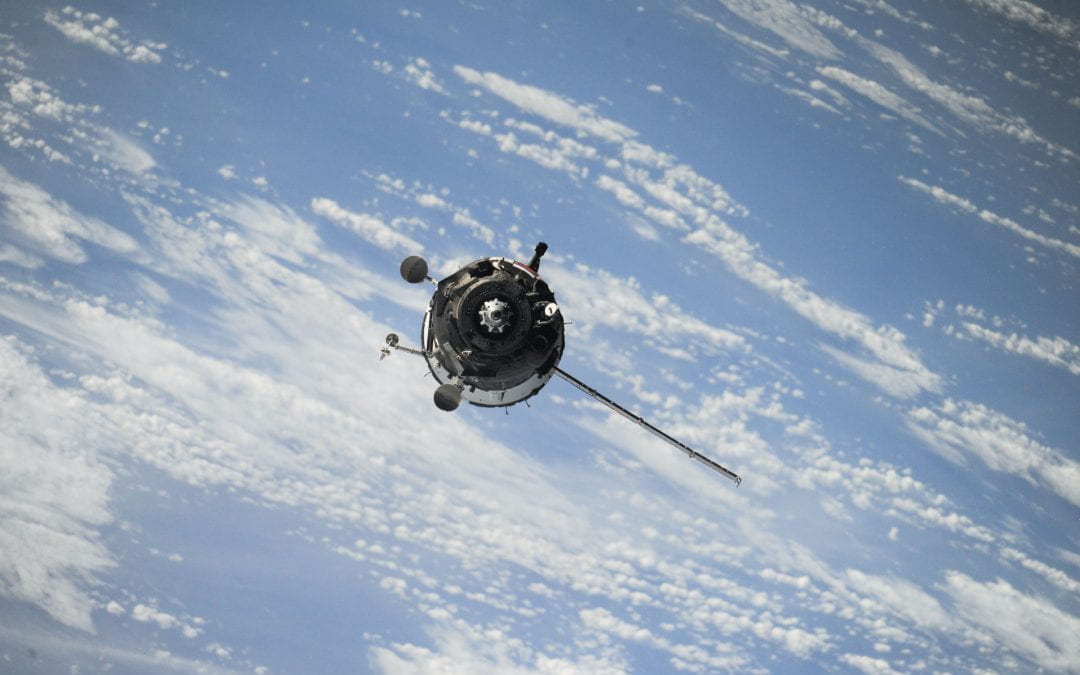By Laura Pirovano
There’s too much junk in space and a real need to know where it is moving, to protect important spacecraft and satellites, writes Laura Pirovano.
Space – vast and almost empty. This has always been our view and it has hardly changed even with the beginning of the space era 60 years ago. But space has been explored greedily, without a plan for sustainability, and is now polluted.
There are 4,700 active satellites in space right now, and 29,400 tracked items of debris which includes non-functioning satellites, spent rocket bodies and parts of satellites, the results of collisions or fragmentation. But there are many more items that are untracked.
The cause of this space pollution is our advancing technology which has made space increasingly more accessible. At the beginning of the space era, access was exclusive to governments. Now, undergraduate students can launch their own CubeSats.
This increased accessibility, with the current and planned deployment of mega-constellations (thousands of satellites working together to deliver a service), has brought a huge rise in the number of space launches and therefore, the number of objects in space. In 2020 alone more satellites were launched in low-Earth orbit than in the previous three years combined.
This growing level of space activity means efficient space traffic management is needed. Just like air traffic control for planes.
Currently, all tracked objects identified in space are entered into a “space catalogue”. This is a list of objects larger than 10cm of which we know the location and future path with a certain degree of uncertainty.
If it looks like any of these objects are going to collide with, for example, a satellite (or have a “conjunction” as it is known in space), human intervention is required to change the course of the satellite. The low accuracy of data forces operators to react to many potential conjunctions which in reality would not be dangerous.
Each manoeuvre of this nature has a high cost: operators’ time is used to plan the manoeuvre, fuel dedicated to the mission is used, and science instruments are switched off during the manoeuvre, hence not gathering data. This means operators also must decide whether the collision risk is high enough to perform the manoeuvre.
One of the main reasons for poor accuracy is that the space junk catalogue does not include debris smaller than 10cm. This debris is too small to be tracked but has the power to completely destroy a satellite and, in turn, create thousands of other pieces of debris in the process.
It is estimated there are a million pieces of debris in the size range but our knowledge is limited, meaning the services we can provide for space traffic management are also incomplete.
It is clear that it is now time to act (which was also the title of the last European Conference on Space Debris in June 2021) because business-as-usual behaviour will endanger the future of space exploration. Action must include:
– Reliability by future missions where passivation (this means ensuring that a mission reaching the end of its working life has no remaining energy sources that might risk a break-up) and disposal guidelines are followed at the end of the mission to avoid more debris in orbit.
– Completeness and accuracy of the space catalogue to produce better services for space traffic management, especially in view of the continuing rise in space launches.
– Removal from orbit of the biggest debris using Active Debris Removal measures.
My work focuses on research into the second part of this list and is termed as “space situational awareness” which means keeping track of objects in orbit and predicting where they will be at any given time.
During my PhD, I focused my research on finding methods to efficiently perform data association, which is the task of linking different observations to the same object as it orbits. This is especially useful for the non-tracked population of debris. Unknown objects may be seldom observed so it’s hard to know where they’re going, or if two observations scattered over time are of the same object. A wrong association brings even more uncertainty in the catalogue, it can mean either inserting fictitious objects or deleting others.
Once two scattered observations are associated, we know much more about the object’s orbit and can more accurately predict its future position. This allows for further dedicated follow-up observations to track the object and add it to the catalogue.
So, despite the eagerness to explore more in space and improve space technology, a lot still needs to be done to ensure this will still be viable in the future when the problem of space junk will only get worse. This is what makes me passionate about this work.
Space debris is an acknowledged problem, objects smaller than 10cm are like bullets travelling at 27,000 km/h. Knowing and predicting their path is fundamental if we are to keep running all the services from space we normally use in our daily lives – from simple live TV, to weather forecast, internet connection, GPS and, most importantly, disaster management.
Without proper space traffic management supported by an accurate catalogue of space debris, we cannot ensure space safety.
This article was originally published on Newsroom and was republished with permission. For the original, click here.
Laura Pirovano is a Research Fellow in Mechanical Engineering at the University of Auckland.
Disclaimer: The ideas expressed in this article reflect the views of the author and not necessarily the views of The Big Q.
You might also like:
Space Junk: Can we clean up earth’s orbit before it’s too late?

